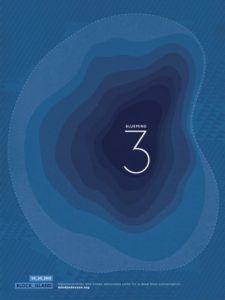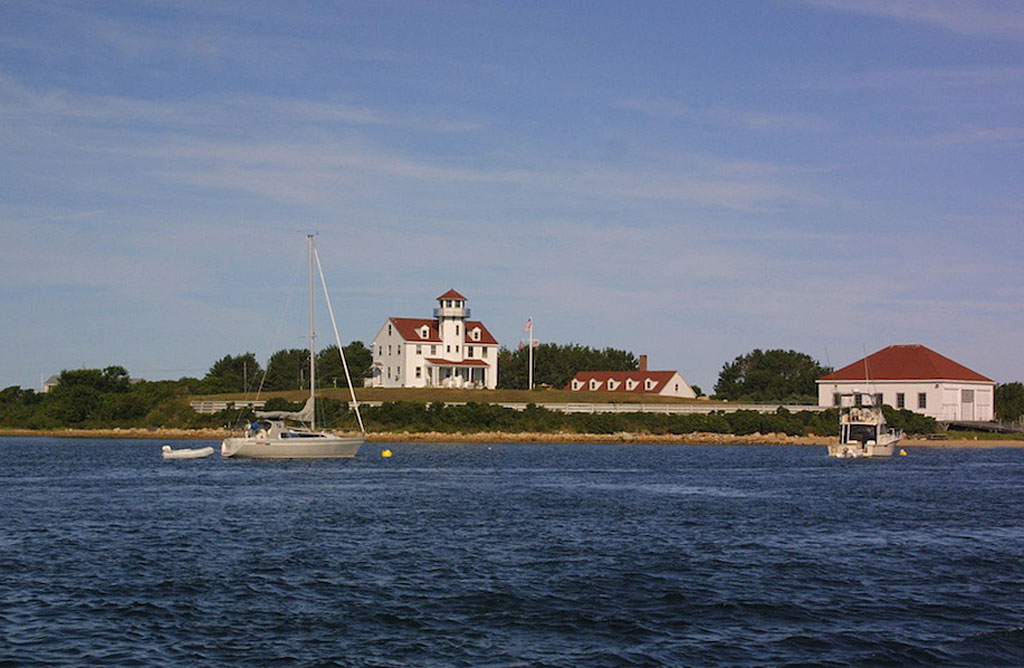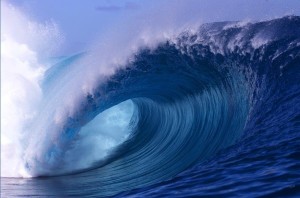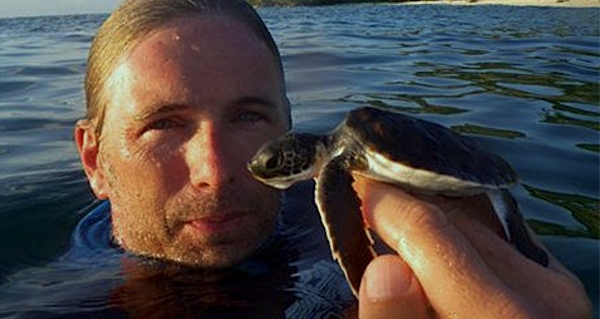Water On My Mind
April 1, 2013
Mission Blue partner, Wallace J. Nichols is our guide today, taking us deep into the realm of Blue Mind – something many of us know intuitively, but haven’t even begun to explore. What makes our Blue Minds tick? And you won’t want to miss the embedded video from Nautica! ~ ed.
Take a stroll through your favorite bookstore.
Notice that lining the shelves in the best-selling non-fiction section are a great many books about the neuroscience of magic and happiness, memory and fear, music and our subconscious.
A quick scan of any of these books–and their relatives–for the words “ocean”, “water”, “nature” will largely come up short. Try it yourself.
Teaching a recent course at Stanford University to a room full of graduate students in ocean conservation I asked a series of unusual questions and received some surprising answers.
Q1: What’s an emotion that drives the ocean problems you are working to solve?
A: Fear, greed, addiction, guilt, frustration, fatigue, confusion, stress, hopelessness.
Q2: What’s an emotion that drives the ocean solutions you are working on?
A: Interest, hope, love, awe, pride, gratitude, empathy, connectedness, trust, compassion.
Q3: What do you know about the science of these emotions?
A: Not much, very little, nothing, not sure, good question.
Q4: Who do you know who knows about the science of emotions?
A: Not sure, no one, let me think about that a bit, that’s another good question.
Q5: As a Stanford University graduate student, would you describe your life as stressful?
A: Yes, (nods), mmm hmmm (all hands went up).
Q6: Do you know where this short video was filmed (I then projected a 30 second video of coast / ocean on the screen)?
A: No, not sure, hmmmm, yes (one hand went up).
Our current approach to protecting the ocean is mostly based on economics, politics, and ecology. We use the best research and the sharpest tools available to advance a rational global conservation agenda. Marine protected areas, ecosystem services, spatial planning, stable isotope analyses, biotelemetry, and all manner of predictive algorithms fill the ocean conservationist’s modern toolbox.
But, as any neuroscientists will tell you, human decisions are a mix of reason and emotion. As we begin to understand the expansively powerful role of the subconscious mind we’re learning that our decisions may not be decisions at all.
Marketers, politicians, and magicians have known for a long time that an understanding of how the human brain works offers them an keen advantage over the neuro-illiterate masses.
Few conservation scientists or practitioners have cracked a neuroscience text book, taken a course in neuropsychology, or invited a cognitive scientist to join their projects or conferences. Our conversations about the cognitive and emotional health benefits of healthy waterways range from attenuated to zilch. As such, they don’t appear in our ledgers of ecosystem services and play a thin role in how policy decisions are made.
Into this scientific abyss descends the SS BLUEMIND, the metaphorical submarine crewed by some of the world’s leading thinkers about the brain and the ocean. The mission of BLUEMIND is to fundamentally change the way all of us see water. Yes, that’s a big mission.
Recognizing the underlying role the range of human emotions plays in both creating and solving environmental problems is the first step (Q1 + Q2).
Realizing how important our appreciation and understanding of those emotions and drives is to our success at solving the biggest problems facing our planet is the next step (Q3).
 Accessing the deep, expanding knowledge of the science of emotions that exists on our campuses, in the neuroscience and psychology departments, in the medical schools, and bursting from leading journals is the critical next move following steps one and two.
Accessing the deep, expanding knowledge of the science of emotions that exists on our campuses, in the neuroscience and psychology departments, in the medical schools, and bursting from leading journals is the critical next move following steps one and two.
In that Stanford classroom it’s safe to say we were just a few footsteps away from some of the world’s experts on many of the emotions on our lists. Nearby offices of neurophysiologist Robert Sapolsky, researchers at CCARE, Kelly McGonigal, and Philippe Goldin–to name just a few–all working on deepening our understanding of stress, fear, compassion, empathy, mindfulness, relaxation, and attention (Q4).
Let’s start with the killer emotion. Whether one is a graduate student, a business person, a school teacher, or military veteran there’s a good chance our lives contain more stress than we’d like. Traffic, media, finances, and the daily grind of bad news from around the world add to the growing pile of anxiety-causing factors. Bursts of stress and fear can get us out of trouble. But we know that chronic stress leads to disease, toxic stress destroys brain cells (Q5).
Being outside, exercising, and moving around is documented to reduce stress, increase learning, enhance memory, contribute to an overall sense of well-being, make us healthier, and boost creativity. Add water and all of that is amplified. In other words, walking on a beach is good for us. Even thinking about or remembering walking on a beach is good for us.
The short mystery video I shared with the class was of the beautiful empty coast and Pacific Ocean closest to where we sat on the Stanford campus, a short jaunt over the mountain to San Gregorio Beach (Q6). Clearly, an underutilized resource among students.

On May 30th on Block Island the crew of the SS BLUEMIND will gather to continue the conversation. Harvard Medical School’s Dr. Helen Reiss, Laura Parker Roerden of Ocean Matters, and Celine Cousteau will dive into the science of empathy and compassion within the context of our relationship to our water planet. Chef Barton Seaver and Vanderbilt University’s Dr. David Zald will delve into how power and food addictions drive ocean extinctions, from bluefin tuna to sharks. NYU neurolingistics researcher Dr. David Poeppel will be joined by author Mary Alice Monroe and musician Halsey Burgund to think about water language and our brains. We’ll continue to explore the neurogeography of place, the neuroaesthetics of the ocean, and the neuroeconomics of surfing and whale watching.
Of course, we’ll also swim, surf, paddle, sing, share and create stories, and enjoy some clams on the beach.
As we connect the dots between neuroscience, psychology, and the interconnected health of our water planet and ourselves new ideas have been flowing forth. We’ll capture those ideas and make widely available BLUEMIND “talking points”, a list of compelling neuroconservation hypotheses for interested grad students, and a simple guide for formal and informal educators who wish to incorporate these ideas into their field trips, curricula and lesson plans.
The summit will also be live streaming on MindandOcean.org. There’s plenty of room on the SS BLUEMIND. Our mission is your mission. Welcome aboard!
Billion Baby Turtles Project
 Along with my friends Brad Nahill at SEE the WILD and Fabien Cousteau at Plant a Fish, we came up with the idea of the Billion Baby Turtles Project to help support groups working on the sea turtle front lines. To make a million more adult turtles we need a billion more baby turtles. It’s a one in a thousand situation out there, roughly speaking.
Along with my friends Brad Nahill at SEE the WILD and Fabien Cousteau at Plant a Fish, we came up with the idea of the Billion Baby Turtles Project to help support groups working on the sea turtle front lines. To make a million more adult turtles we need a billion more baby turtles. It’s a one in a thousand situation out there, roughly speaking.
By creatively connecting individuals and small businesses with grassroots projects working to increase sea turtle production, we are helping overcome donor fatigue, burn out, and other second half challenges.
In the coming years we will collaborate widely to further expand the global sea turtle tribe, widen the base of donors through micro-philanthropy, and throw our support behind the men and women working for turtles on the front lines in their coastal communities around the world.
Feature photo: (c) Jim Patterson, Jim Patterson Photography









